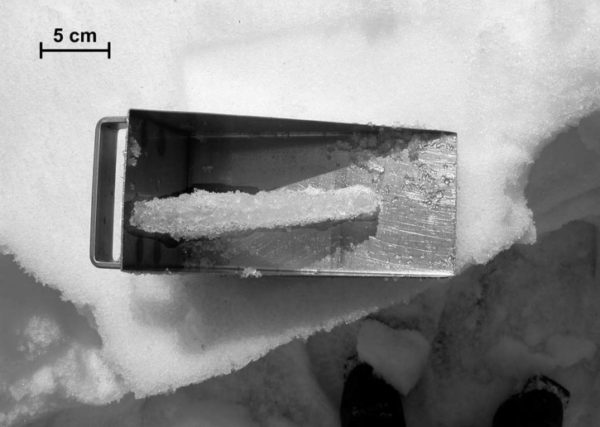When cooling solidifies liquid water into ice within or on the surface of the snowpack.

A refrozen layer of snow. Credit: The International Classification for Seasonal Snow on the Ground / Elder
After a wet snow layer refreezes, strong ice bonds form between snow grains. If refreezing happens at a larger scale throughout a wet snowpack, it makes for stable and predictable avalanche conditions. Under favorable springtime conditions, the snowpack often goes through melt-freeze cycles and can provide stable opportunities to ride in more complex avalanche terrain. The quality and depth of refreeze will dictate how strong the snowpack is, and how long it will remain stable after it begins to thaw again. Colder air temperatures and clear skies promote refreezing through radiative cooling. You can feel and probe the snow to get a sense of the thickness of a frozen surface layer. If this surface is supportive – that is, if you can walk across the snow surface without plunging through into wet snow below – it is a decent refreeze. Conversely, a thin crust that won’t support your weight is a sign of a poor refreeze and presents the potential for rapidly deteriorating wet avalanche conditions.